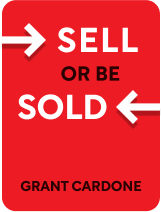

This article is an excerpt from the Shortform book guide to "Sell or Be Sold" by Grant Cardone. Shortform has the world's best summaries and analyses of books you should be reading.
Like this article? Sign up for a free trial here .
How do you build trust with customers? What are customers wary of?
You can build trust with customers by aiding the customer’s research, providing support documents, and putting all negotiations on paper. You need to build trust because customers are usually wary of salespeople and do not always trust their own ability to make the right decision.
Read on to learn more about how to build trust with customers.
Establish Trust
In this article, we’ll work to build trust with customers. Lack of trust is a major reason customers don’t buy things, and there are one of two things they don’t trust.
1. You (the salesperson). This likely isn’t personal—some customers distrust salespeople on the whole because a few unscrupulous people have run scams or cons. When customers are skeptical of you, they might not believe you, they might challenge you, or they might seek other sources of information. Even if you do successfully sell something to someone who doesn’t trust you, you’ll probably have problems when it comes to following up, such as during delivery.
2. Themselves (specifically, their ability to make the right choice). If customers don’t trust themselves, this probably stems from an experience with one or more of the following:
- The customers have lied or exaggerated themselves. As a result, they know that every person has the potential to do so. They assume you’re no better than they are and are also not telling the truth. This is the most common reason for distrust.
- The customers have been scammed or victims of a misunderstanding.
Therefore, to sell anything, you need to build trust with customers by demonstrating that you’re credible. This will make the customer trust you as a person, and, if she’s insecure, trust that you will help guide her to the right decision.
To build trust with customers:
1. Assume the customer doesn’t trust you (even if she knows you) and doesn’t believe anything you say. Assume she will only believe what she can see. People believe things that they can observe for themselves far more readily than things people tell them. Additionally, people tend to assume that anything that’s written down is true.
2. Facilitate the customer’s research. The more information you give her, the more likely she is to buy something. Additionally, informed buyers can be easier to sell to because you can use logic—uninformed buyers can get emotional and unreasonable. (For instance, the auto industry disobeys this step—it’s notoriously stingy with information—and as a result, it suffers from turnover and low profits.)
Build trust with customers by helping with their research. Provide:
- As much accessible, up-to-date, third-party, real-time, computer-generated data as possible
- Internet access at your place of business so you can look things up for a customer or she can look them up herself
- Your competitor’s ads, so customers can see what they’re offering without leaving your place of work
3. Show her proof that you’re telling the truth by supporting everything you say with documentation or something tangible that she can see for herself.
- For example, when Cardone wanted his friend to invest in a property, he didn’t pitch it. Instead, he asked his friend to meet him at the property. When his friend saw it and all the opportunities it provided, he asked Cardone if he could invest.
4. Put negotiations and promises on paper as part of a buyer’s order. (You aren’t going to scare the customer off by asking her to sign something).
What If I Don’t Know the Answer?
Customers expect you to have all the answers, even though with the rise of the Internet, they might know as much or more about the products you sell as you do. If someone asks a question and you don’t know the answer, tell her that it’s a great question and that you’ll find out for her. This demonstrates that you’re helpful and it also helps build trust with customers.
Once you’ve found out the answer, write it down and memorize it so that the next time someone asks, you’re prepared.

———End of Preview———
Like what you just read? Read the rest of the world's best book summary and analysis of Grant Cardone's "Sell or Be Sold" at Shortform .
Here's what you'll find in our full Sell or Be Sold summary :
- How your happiness and even survival depend on your selling ability
- The five steps to becoming a master salesperson
- Step-by-plans to lead the customer to make a purchase






